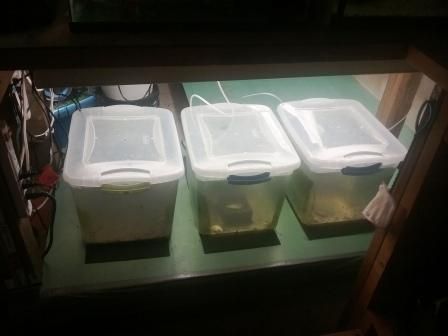I have to disagree with Byron and say frozen foods are nutritional. Freezing food for long periods of time can cause them to lose some nutritional value, however they don't lose much. If they did we wouldn't have so many frozen foods available to people, meat, veges, icecream (not necessarily nutritional but yummy).
Colin, this is just not factual. First, you cannot logically compare human frozen foods to frozen fish foods. I won't even pursue that, but directly counter your statement that frozen fish foods are nutritional. They are not.
Read the labels. Hikari frozen bloodworms are 6% protein, 0.9% fiber, 89% moisture--in other words, little nutrition but mostly water. Hikari frozen daphnia is 5% protein, 0.9% fiber and 89% moisture--again little nutritional value and mostly water.
The very low protein value is critical because protein primarily comes from animal not vegetable so worms and daphnia being this low are clearly not much nutritional value.
Compare that to the prepared dried foods like Omega One Veggie Flake with 33% protein, 4% fiber and 8.5% moisture, or New Life Spectrum freshwater flake with 49% protein, 4% fiber and 9% moisture, plus several vitamin supplements. And, these two brands do not contain any cereal/meal/fillers [AbbeysDad refers to these "bad" things in a subsequent post].
There is good reason why professional aquarists like Jack Wattley tell us that prepared foods are the most nutritional value. The frozen is mostly water, and fine for treats to stimulate fish but should not be the sole diet as too much is missing.
Last edited:




